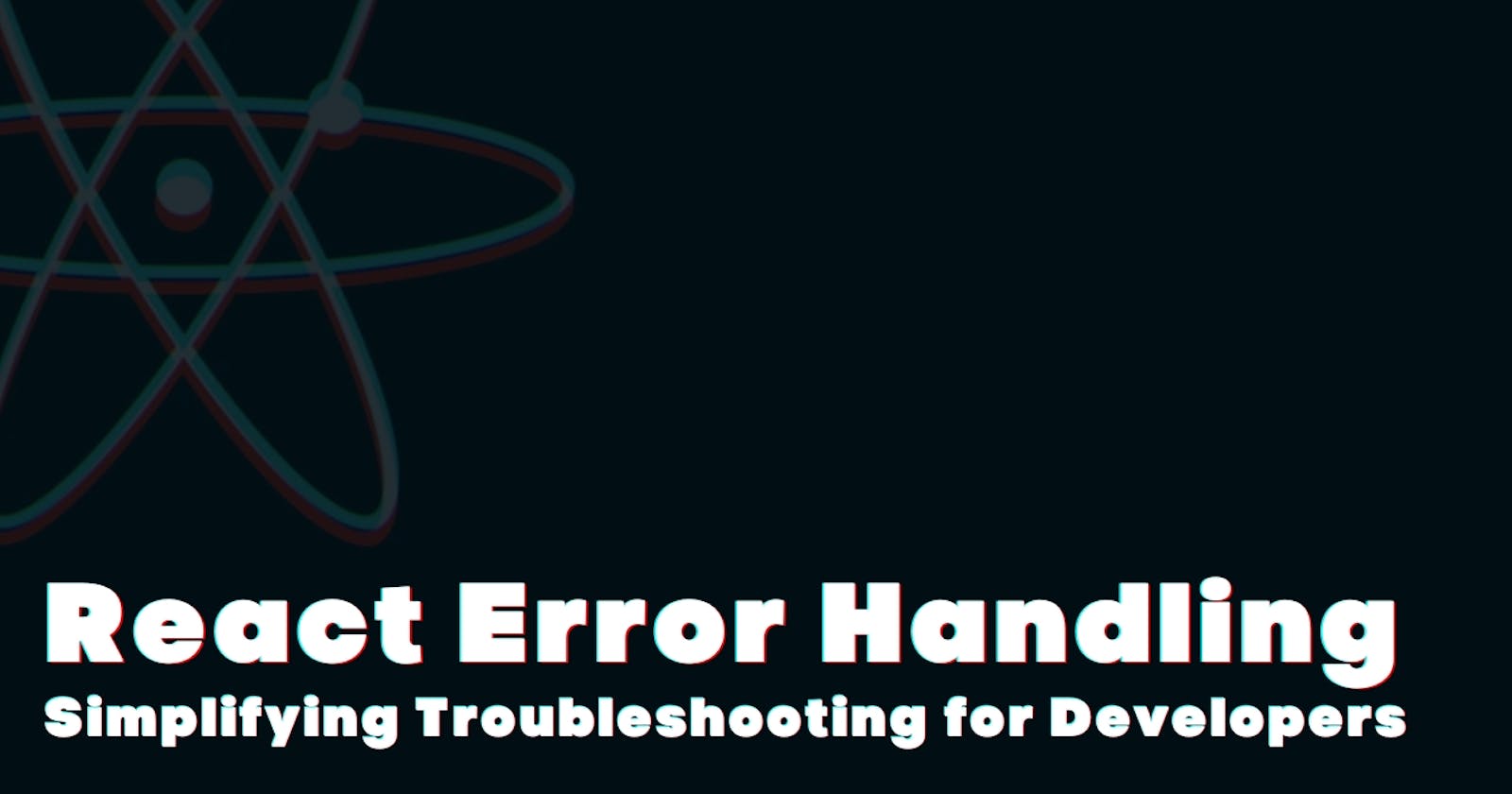React Error Handling: Simplifying Troubleshooting for Developers
Understanding the basic Error Handling techniques for React JS applications
Table of contents
No headings in the article.
Handling errors is a crucial aspect of building any software application, including React applications. Error handling helps to identify and fix issues in your application, resulting in a better user experience. In this article, we will explore various error-handling techniques and best practices in React, helping you create robust applications with fewer bugs and issues.
Error Boundaries
React provides a feature called Error Boundaries, which helps you handle errors that occur within the component tree. An Error Boundary is a React component that catches JavaScript errors anywhere in its child component tree and displays a fallback UI instead of the component tree that crashed.
You can define an Error Boundary component by implementing the componentDidCatch(error, info) lifecycle method. This method gets called whenever an error is thrown in any of the child components. You can use this method to update the component state and display an error message or fallback UI to the user.
import React from 'react';
class ErrorBoundary extends React.Component {
constructor(props) {
super(props);
this.state = { hasError: false };
}
componentDidCatch(error, info) {
this.setState({ hasError: true });
}
render() {
if (this.state.hasError) {
return <h1>Something went wrong.</h1>;
}
return this.props.children;
}
}
export default ErrorBoundary;
Using Try-Catch Blocks
Another way to handle errors in React is to use try-catch blocks. You can wrap any code that may throw an error in a try block and catch the error in the catch block. This technique is useful when dealing with asynchronous code or when you want to handle errors in a specific way.
try {
// code that may throw an error
} catch (error) {
// handle error
}
Using Error Codes
Error codes are an effective way to handle errors in your application. Error codes help you identify the type of error that occurred, allowing you to handle errors in a specific way. You can define error codes as constants and use them throughout your application.
const ERROR_CODES = {
NETWORK_ERROR: 'NETWORK_ERROR',
SERVER_ERROR: 'SERVER_ERROR',
CLIENT_ERROR: 'CLIENT_ERROR',
};
You can use error codes in combination with Error Boundaries and Try-Catch blocks to handle errors effectively in your application.
Logging Errors
Logging errors is an essential part of error handling. By logging errors, you can identify and fix issues in your application quickly. You can use a logging library like log4js to log errors in your application.
import log4js from 'log4js';
const logger = log4js.getLogger();
logger.level = 'debug';
try {
// code that may throw an error
} catch (error) {
logger.error(`Error: ${error}`);
}
Conclusion
In conclusion, error handling is a critical aspect of building robust React applications. React provides various error-handling techniques and best practices, including Error Boundaries, Try-Catch blocks, Error Codes, and Logging Errors. By implementing these techniques, you can create applications with fewer bugs and issues, resulting in a better user experience.

